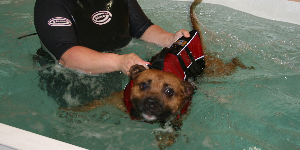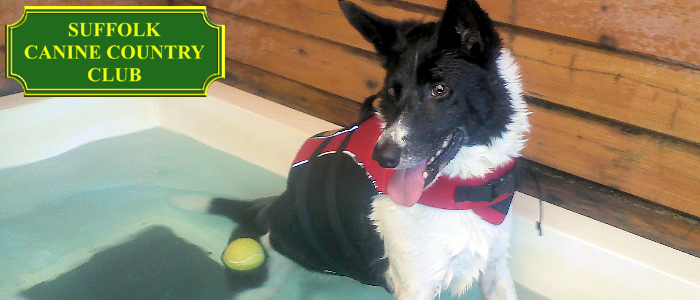Canine hydrotherapy can benefit numerous conditions as follows:
Post operative fracture rehabilitation
Pre operative building of muscle tissue
Hip Dysplasia – (including rehabilitation after Pectineal Myectomy, TPO, THR, Excision Arthroplasty).
Post surgery from Legg-Calve Perthes Disease
Patellar luxation and following treatment (tibial crest transplant)
CCL stabilisation and rehab from TPLO, Extracapsular technique
Neurological conditions – e.g. CDRM, Idiopathic Vestibular Syndrome
Elbow dysphasia – following treatment (arthroscopy, anconeal process).
Panosteitis (light swimming will reduce energy in young dogs without making inflammation worse)
Osteoarthritis
Obesity
Tendonitis
Spinal Injuries – Intervertebral disc disease, Sponylosis, panosteitis, wobblers syndrome
Conditioning
Any other condition in which a dog does not use a limb, or has lack of strength, ROM , proprioceptive ability or weight bearing.
Exercise post rest from ligament or tendon damage/repair (Achilles tendon)
Strengthening, cardiovascular endurance and improved function have all been documented in human hydrotherapy and is as such becoming more popular for the rehabilitation of dogs.
Even when cardiovascular fitness results in a client only being able to swim a few minutes two or three times weekly, this can still significantly increase strength, ROM, function and overall cardiovascular fitness.
Water buoyancy relieves pain, swelling and stiffness.
Voluntary muscle benefits most from hydrotherapy treatment but it also improves cardiac muscles.
Hydrotherapy reduces the load on painful or healing structures, therefore exercise can commence earlier with less muscle activation compared with land based exercise.
Hydrotherapy Menu
Veterinary Referral Form for your vet







